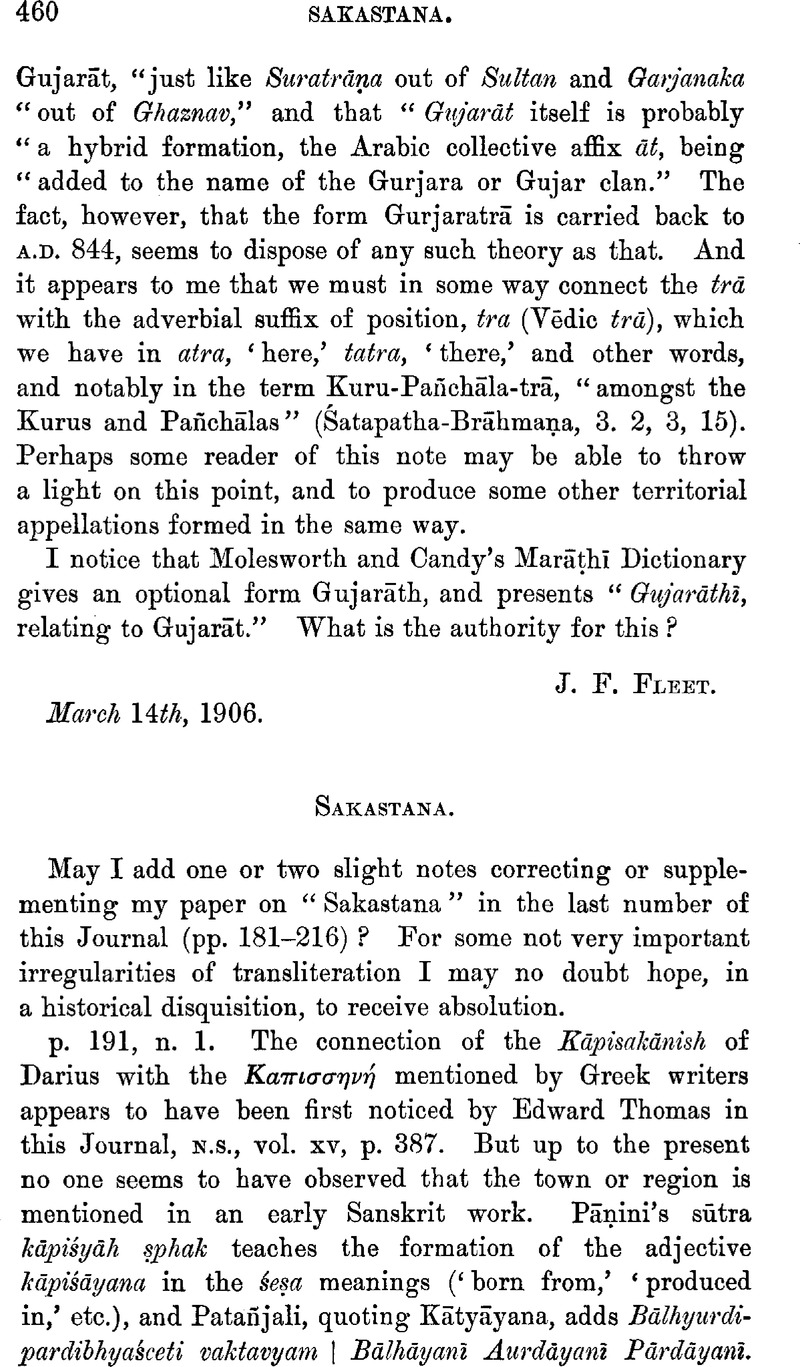No CrossRef data available.

1 I think, however, that I can make a suggestion which under the circumstances has considerable probability. The Buddhist Sanskrit form of the name Udyāna is Uḍḍiyāna or Oḍḍiyāna, and the presence of an r, or at least a cerebral, seems to be attested by the Tibetan U. rgyān. Udyāna is therefore a popular corruption. If Urdi denotes this country, it would be appropriately mentioned in conjunction with Kapiśa, Balkh, and the Pāradas.